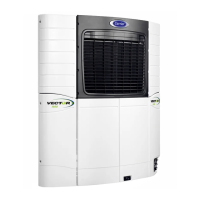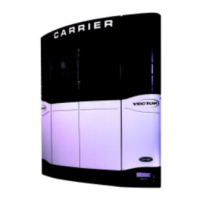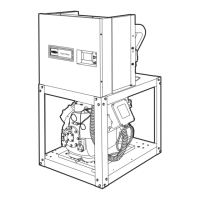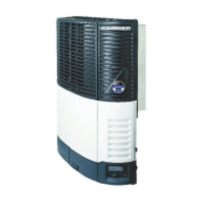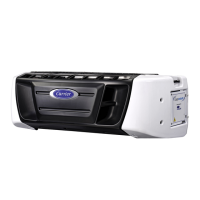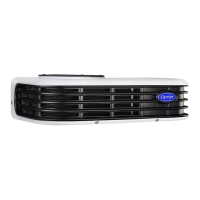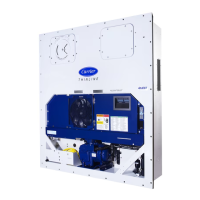62-11389
7−19
Alarm
NO.
Steps Alarm/Cause Corrective Action
23 A/C CURRENT OVER LIMIT - Continued
4 Check High Voltage Components Amp Draw
a. Check condenser fan amp draw on
all legs. (CDCON)
These checks must be made with the unit operating.
WARNING
Caution and good electrical practices must
be used when working around and with
high voltage circuits.
Verify that all three actual amperage readings for
each component are within 10% of each other, and
are within the values shown in Section 2.11.
b. Check evaporator fan motor amp
draw on all 3 legs (1EVCON)
c. Check compressor amp draw on all
3 legs. (CCON)
d. Check heater amp draw.
(1HTCON1, 1HTCON2,
2HTCON1, 2HTCON2, 3HTCON1
& 3HTCON2 - if applicable)
5 Check Generator Voltage (If Used When Alarm Occurred)
Check voltage at GENCON L1-L2,
L1-L3, L2-L3.
Must be within voltage limits shown in Section 2.11.
6 Check Power Source Voltage (If Used When Alarm Occurred)
Check voltage at PSCON L1-L2,
L1-L3, L2-L3.
Must be within voltage limits shown in Section 2.11.
7 Check Voltage Output From Contactors
a. Check voltage at GENCON T1-T2,
T1-T3, T2-T3.
Must be within voltage limits shown in Section 2.11.
b. Check voltage at CCON with com-
pressor operating. T1-T2, T1-T3,
T2-T3.
Must be within voltage limits shown in Section 2.11.
8 Verify AC Current Sensor Accuracy (CT2 & CT3)
Power the microprocessor by tog-
gling the Main Power switch out of
the OFF position.
Unit AC Current #1 and #2 reading in Data List must
be 0.0 " 1.0 amp.
9 Defective Overload Ground Fault (OGF) Detector
Opens prematurely. Remove and replace.
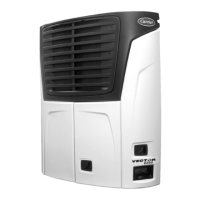
